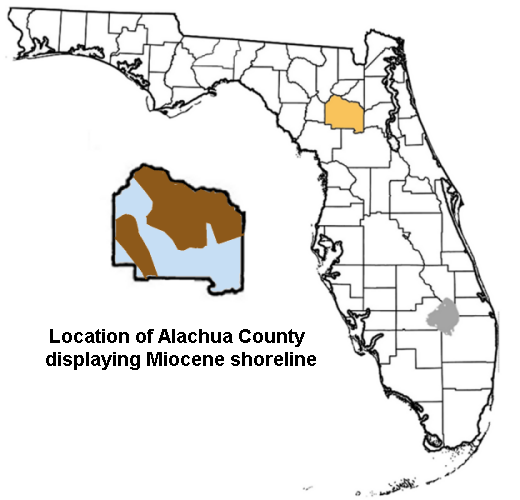|
Pachyarmatherium
''Pachyarmatherium'' is a genus of extinct large armadillo-like cingulates found in North and South America from the Pliocene and Pleistocene epochs, related to the extant armadillos and the extinct pampatheres and glyptodonts. It was present from 4.9 Mya to 11,000 years ago, existing for approximately . Taxonomy ''Pachyarmatherium'' was named by Downing and White (1995). Its type is ''P. leiseyi''. It was assigned to Dasypodoidea by Downing and White (1995), and tentatively to Glyptodontidae by McKenna and Bell (1997). A cladistic analysis performed by de O. Porpino et al. (2009) led to the conclusion that ''Pachyarmatherium'' is a sister group to a clade consisting of Glyptodontidae and Pampatheriidae. Oliveira et al. (2013) suggest that ''Pachyarmatherium'' is a possible dasypodid. Fossil distribution of ''Pachyarmatherium'' ''P. leiseyi'' * Kissimmee River site, Tamiami Formation, Okeechobee County, Florida ~4.9—1.8 Mya. * Haile 16A Site, Alachua Count ... [...More Info...] [...Related Items...] OR: [Wikipedia] [Google] [Baidu] |
Lujanian
The Lujanian age is a South American land mammal age within the Pleistocene and Holocene epochs of the Neogene, from 0.8–0.011 Ma or 800–11 tya. It follows the Ensenadan. The age is usually divided into the middle Pleistocene Bonaerian stage, which ends at about 130,000 years, and the Lujanian, which lasts from about 130,000 years into the early Holocene. The latter Lujanian stage overlaps chronologically with the North American Irvingtonian and Rancholabrean. Fauna include ground sloths, litopterns, short-faced bears, South American horse ''Amerhippus'' and cingulates such as glyptodonts and the armadillo-like ''Pachyarmatherium ''Pachyarmatherium'' is a genus of extinct large armadillo-like cingulates found in North and South America from the Pliocene and Pleistocene epochs, related to the extant armadillos and the extinct pampatheres and glyptodonts. It was presen ...''. References Pleistocene life Holocene Quaternary animals of South America { ... [...More Info...] [...Related Items...] OR: [Wikipedia] [Google] [Baidu] |
Cingulata
Cingulata, part of the superorder Xenarthra, is an order of armored New World placental mammals. Dasypodids and chlamyphorids, the armadillos, are the only surviving families in the order. Two groups of cingulates much larger than extant armadillos (maximum body mass of 45 kg (100 lb) in the case of the giant armadillo) existed until recently: pampatheriids, which reached weights of up to 200 kg (440 lb) and chlamyphorid glyptodonts, which attained masses of 2,000 kg (4,400 lb) or more. The cingulate order originated in South America during the Paleocene epoch about 66 to 56 million years ago, and due to the continent's former isolation remained confined to it during most of the Cenozoic. However, the formation of a land bridge allowed members of all three families to migrate to southern North America during the Pliocene or early Pleistocene as part of the Great American Interchange. After surviving for tens of millions of years, all of the pampat ... [...More Info...] [...Related Items...] OR: [Wikipedia] [Google] [Baidu] |
Haile Quarry Site
The Haile Quarry or Haile sites are an Early Miocene and Pleistocene assemblage of vertebrate fossils located in the Haile quarries, Alachua County, northern Florida. The assemblage was discovered during phosphate mining, which began in the late 1940s. Haile sites are found in the Alachua Formation. Two sites within the Ocala Limestone yielded Upper Eocene Valvatida (sea stars) and mollusks. University of Florida and Florida Museum of Natural History paleontologists numbered the Haile fossil sites with Arabic and Roman numbers and letters in order to define locations more distinctly. UF scientists used Roman numbering and the FLMNH scientists used Arabic. Numbered Haile sites *V/XIXA aka Haile 5A, 19A (FLMNH repository) *5B Miocene *6A. *7C. *12B. *XVA aka 15A. *16A. *21A. *ID. *VIIA. *VIIIA. *XIB. *XIIIA. *XIIIB. *XIVA. *XIXD. *IVB. Late Pleistocene Haile sites: 7C, 15A (No longer exists), 16A, and 21A. Fish *''Carcharodon auriculatus'' Amphibians/Reptiles *''Bufo'' (toad) ... [...More Info...] [...Related Items...] OR: [Wikipedia] [Google] [Baidu] |
Pliocene
The Pliocene ( ; also Pleiocene) is the epoch in the geologic time scale that extends from 5.333 million to 2.58See the 2014 version of the ICS geologic time scale million years ago. It is the second and most recent epoch of the Neogene Period in the . The Pliocene follows the Epoch and is followed by the Epoch. Prior to the 2009 ... [...More Info...] [...Related Items...] OR: [Wikipedia] [Google] [Baidu] |
Dasypodid
Dasypodidae is a family of mostly extinct genera of armadillos. One genus, ''Dasypus'', is extant, with at least seven living species. __TOC__ Classification Below is a taxonomy of armadillos in this family. Family Dasypodidae *† Genus '' Acantharodeia'' *† Genus '' Amblytatus'' *† Genus '' Archaeutatus'' *† Genus ''Astegotherium'' *† Genus '' Barrancatatus'' *† Genus '' Chasicotatus'' *† Genus ''Chorobates'' *† Genus '' Coelutaetus'' *† Genus '' Eocoleophorus'' *† Genus '' Epipeltecoelus'' *† Genus ''Eutatus'' *† Genus '' Hemiutaetus'' *† Genus '' Isutaetus'' *† Genus '' Lumbreratherium'' *† Genus '' Macrochorobates'' *† Genus '' Mazzoniphractus'' *† Genus '' Meteutatus'' *† Genus '' Pedrolypeutes'' *† Genus '' Prodasypus'' *† Genus ''Proeutatus'' *† Genus '' Prostegotherium'' *† Genus '' Pucatherium'' *† Genus '' Punatherium'' *† Genus ''Stegotherium'' *† Genus '' Stenotatus'' *† Genus ''Utaetus'' * Subfamily Dasypodinae ... [...More Info...] [...Related Items...] OR: [Wikipedia] [Google] [Baidu] |
Prehistoric Placental Genera
Prehistory, also known as pre-literary history, is the period of human history between the use of the first stone tools by hominins 3.3 million years ago and the beginning of recorded history with the invention of writing systems. The use of symbols, marks, and images appears very early among humans, but the earliest known writing systems appeared 5000 years ago. It took thousands of years for writing systems to be widely adopted, with writing spreading to almost all cultures by the 19th century. The end of prehistory therefore came at very different times in different places, and the term is less often used in discussing societies where prehistory ended relatively recently. In the early Bronze Age, Sumer in Mesopotamia, the Indus Valley Civilisation, and ancient Egypt were the first civilizations to develop their own scripts and to keep historical records, with their neighbors following. Most other civilizations reached the end of prehistory during the following Iron Age. T ... [...More Info...] [...Related Items...] OR: [Wikipedia] [Google] [Baidu] |
Prehistoric Cingulates
Prehistory, also known as pre-literary history, is the period of human history between the use of the first stone tools by hominins 3.3 million years ago and the beginning of recorded history with the invention of writing systems. The use of symbols, marks, and images appears very early among humans, but the earliest known writing systems appeared 5000 years ago. It took thousands of years for writing systems to be widely adopted, with writing spreading to almost all cultures by the 19th century. The end of prehistory therefore came at very different times in different places, and the term is less often used in discussing societies where prehistory ended relatively recently. In the early Bronze Age, Sumer in Mesopotamia, the Indus Valley Civilisation, and ancient Egypt were the first civilizations to develop their own scripts and to keep historical records, with their neighbors following. Most other civilizations reached the end of prehistory during the following Iron Age. T ... [...More Info...] [...Related Items...] OR: [Wikipedia] [Google] [Baidu] |
Hillsborough County, Florida
Hillsborough County is located in the west central portion of the U.S. state of Florida. In the 2020 census, the population was 1,459,762, making it the fourth-most populous county in Florida and the most populous county outside the Miami metropolitan area. A 2021 estimate has the population of Hillsborough County at 1,512,070 people with a yearly growth rate of 1.34%, which itself is greater than the populations of 12 states according to their 2019 population estimates. Its county seat and largest city is Tampa, Florida, Tampa. Hillsborough County is part of the Tampa–St. Petersburg, Florida, St. Petersburg–Clearwater, Florida, Clearwater Tampa Bay Area, Metropolitan Statistical Area. History Hillsborough County was created on January 25, 1834, from Alachua County, Florida, Alachua and Monroe County, Florida, Monroe Counties, during the Florida Territory, U.S. territorial period (1822–1845). The new county was named for Wills Hill, 1st Marquess of Downshire, Wills Hill ... [...More Info...] [...Related Items...] OR: [Wikipedia] [Google] [Baidu] |
Bermont Formation
The Bermont Formation is a geologic formation in Florida. It preserves mostly invertebrate fossils that date back to the Middle Pleistocene. Most of the fossils preserved are extant mollusk shells. It is mined commercially along with similar formations, to produce shell fill for construction. A lot of our information on the Bermont Formation comes from commercial mining operations. Due to the nature of Florida's flat landscape, paleontologists rely on commercial interest in mining to gain access to otherwise inaccessible specimens for study. Such is the case with the Bermont Formation's bone bed in the Leisey shell pit. As is the case with some other formations, UV can sometimes be used to bring out hidden pigmentation in some fossil shells. This is especially useful in telling the difference between some species, which would otherwise be indistinguishable. Environment of Deposition The original environment of the deposits has been interpreted as being that of a shallow coast ... [...More Info...] [...Related Items...] OR: [Wikipedia] [Google] [Baidu] |




